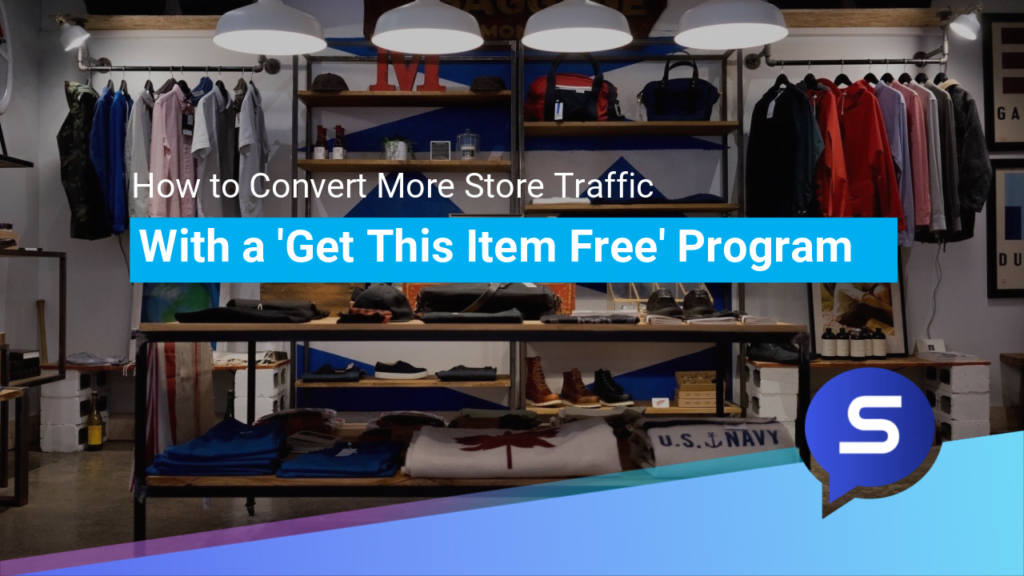

You invest heavily in ads to drive traffic to your online store. Wouldn’t it be great if you could convert more of that traffic? How about if you could also turn a visitor into three or four new customers? Read on to find out how.
A ‘Get This Item Free’ program accomplishes this by offering to reimburse the amount paid for any item on your e-commerce store when they share the item on social media and their friends purchase it too. Running a get-this-item-free referral program appeals to most customers, and motivates them to work hard on sharing your products to their friends and relatives. They really want to get the item for free.
But how do free items actually help your e-commerce shop have more sales? You start off by telling your customers to complete the purchase, then share the product with others. If after sharing and, let’s say three of their friends also purchase, then they can get a refund of the same product. The item needs to be purchased by the number of friends that you specify before they can get it for free.
The truth is, people do make referrals informally all the time. We all like sharing products that we like, to those who are important to us. And if you just add a tweak, by implementing a referral system into this friendly shares, not only it can be profitable for your business, but you’ve also rewarded your loyal customers. It’s a win-win scenario.

This referral program can bring you more new customers because your brand advocates are highly motivated by the incentive that they will get. Plus, customers tend to buy something they otherwise wouldn’t due to the possibility that they’ll get it free. The key to succeed in this referral strategy is, do your best to keep your army of advocates excited. If you keep reminding them of the rewards they’ll receive for free and giving them the exact amount that they would save, whenever they take action, you could be setting them up on a sharing spree. You already have the resources that you need to reach out to a targeted audience. Add a little bit of creativity and learn to spark their interest, soon they’ll be willingly advocating your e-commerce business.

Your referral marketing campaign may be the missing ingredient that your brand needs right now to build momentum for your sales and conversions. In that case, the get-this-item-free strategy will draw in new customers for you consistently, if you implement it right.
Don’t miss out on the new customers that you could have each day online and, who are already looking for the products that you offer. Follow our five tips to hit it big on your get-this-item-free program.
Here’s a reality check: your customer’s friends aren’t yet your customers. They don’t know you or your products yet. It’s your mission to win their attention. Giving them a generous coupon code may compel them to visit your e-commerce site and check out your products. So, you need to determine an effective offer for your customers to share. It could be a discount on the item your customer is sharing, or it could be a discount on ANY item on your store.
Help your customers be great at recommending your e-commerce shop by letting them share coupons that work well at bringing in new customers. If they do their part to share and the coupons don’t appeal to their friends, your customers might get frustrated and won’t take action anymore. That’s why, use their time and yours well, by making sure that you only give away offers that are delightful to your audience.
To achieve this, it’s important that you study your audience, their interests, problems and questions. Give them what they like. We recommend that you use your best first-time offer, if you already have one. If you’ve run previous email[2] and social campaigns, look back and figure out which coupons worked best for bringing in new customers. Keep in mind that you may not earn a profit off of their first purchase, but then you’ll reap all your rewards over time. Having said that, always be generous.
Don’t know where to start to come up with your referral program rules? You can jumpstart your own by referring to someone who’s already done it. You can find a similar program promoted by a large company, check their program rules and use them as a guideline as you write yours. When you’re done and are satisfied with your work, let a business attorney review it. No problem, if you’re on a budget. Consider signing up for a prepaid legal service. They offer services for as low as $25 a month, reviewing 10 pages of document, or more. It’s more than what you need for your program rules.
Like all other referral programs, you need to build a dedicated microsite for all the information that you need to provide to your brand advocates. You need to have them sign up for the program, agree to your specific program rules and give them their own unique referral links that they could use on their advocacy efforts. Good news, you can automate all this technical work by using software with turn-key systems that instantly build a program site and have it running with a design that even matches the look and feel of your brand.
The software takes care of all referrals and tracking necessary to run your online business. You can also take advantage of more advanced softwares, like Sociamonials, which can automatically issue rewards and block fraudulent activities on your referral program. You can design your referral system the way you want it, and leave it to implement on its own, without complicated steps. What’s left for you to do is to check your notifications and respond whenever action is needed on your part.
Are you done with tips number one to three? If you are, it’s time to tell everyone about your get-this-item-free referral program. Launch your referral marketing in all of your social media campaigns. Involve your online community in your latest e-commerce promotions. They will be glad to do so, as it gives them a fair chance of winning items for free.
Here are two best places where to do it:
Do you have best-selling items in your e-commerce store? That’s where it’s most effective to promote your get-this-item-free referral program. Mention it on the product page where your customers can easily see, as they read about your product details. Your software provider will provide copy-and-paste code for the following methods of integrating the campaign on your store product page::
You can embed the referral campaign anywhere on the page. We recommend keeping it lower on the page, somewhere below the ‘Buy Now’ button.
It’s a tab that emerges from the edge of the browser. When you click on it, it reveals the microsite and allows your customers to share without taking them off of the page so they can complete the purchase.
Simply add a button anywhere on the page. When you click the button, it triggers a popup window where your customers can complete the share without leaving the product page.
After your customer bought the product, make sure to send them an email, politely inviting them to join your referral marketing program. Provide them a button that links to the program microsite. Entice them by mentioning the free items they can receive as incentives. Better yet, show them images of the items and the amount they can save. You can do all this by using your marketing automation software.

There’s no better time for you to start your own get-this-item-free program and social media campaigns than today. Think of your customers who’d be happy to join your program, and their friends who share common passions with them. You can reach out to them and offer your e-commerce products. If you believe in your business, then you know you need to find more people to serve. Unlike the old marketing days when setting up of referral systems are costly both in time and money, you can do it now in almost an instant and without having to spend much. What are you waiting for? Find an automation software online now, set-up your own referral program and succeed in your business.
We have more information to share with you about this referral program and six more referral marketing ideas that would help boost your e-commerce customer base. Interested? Download our industry whitepaper.
